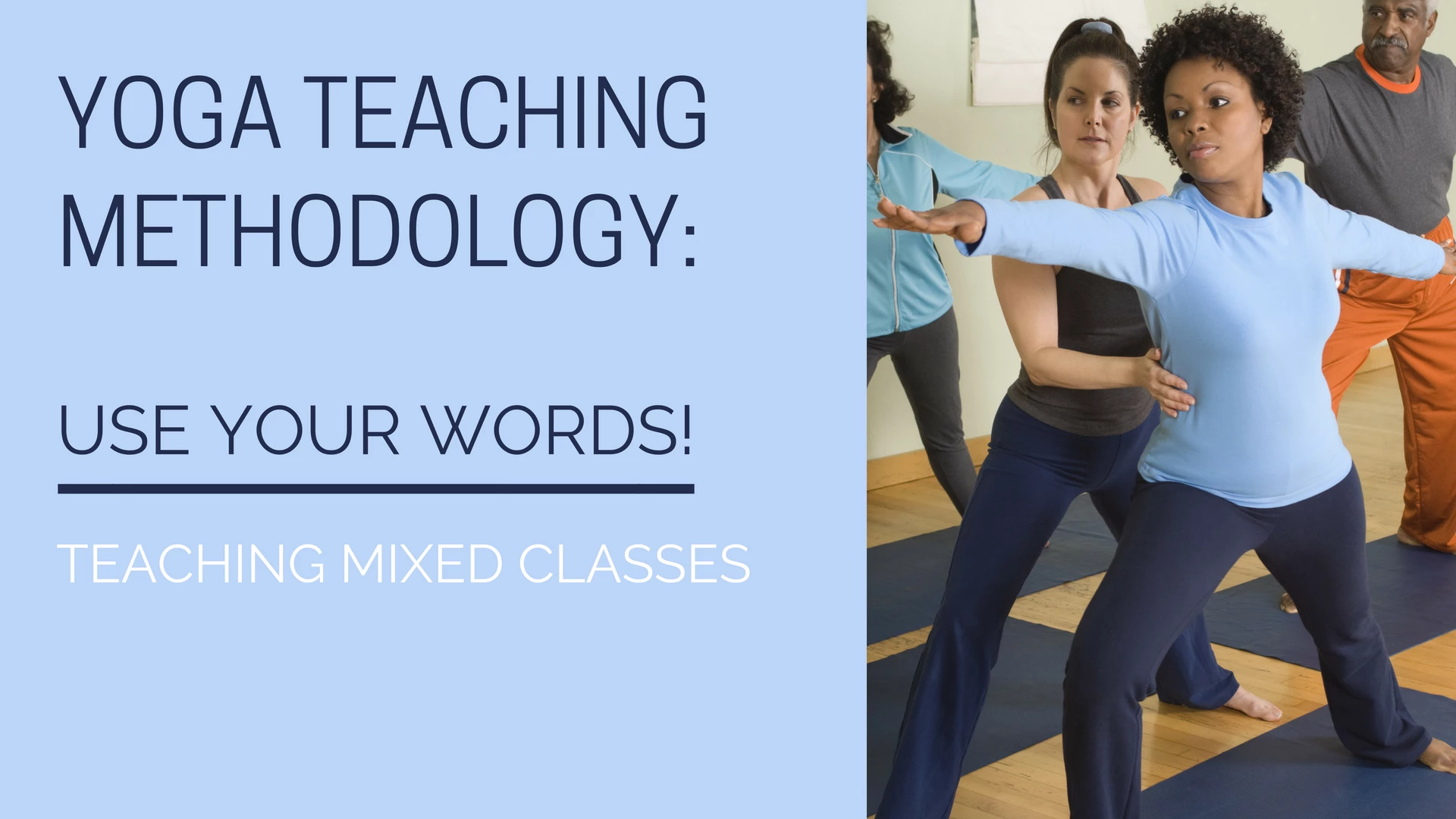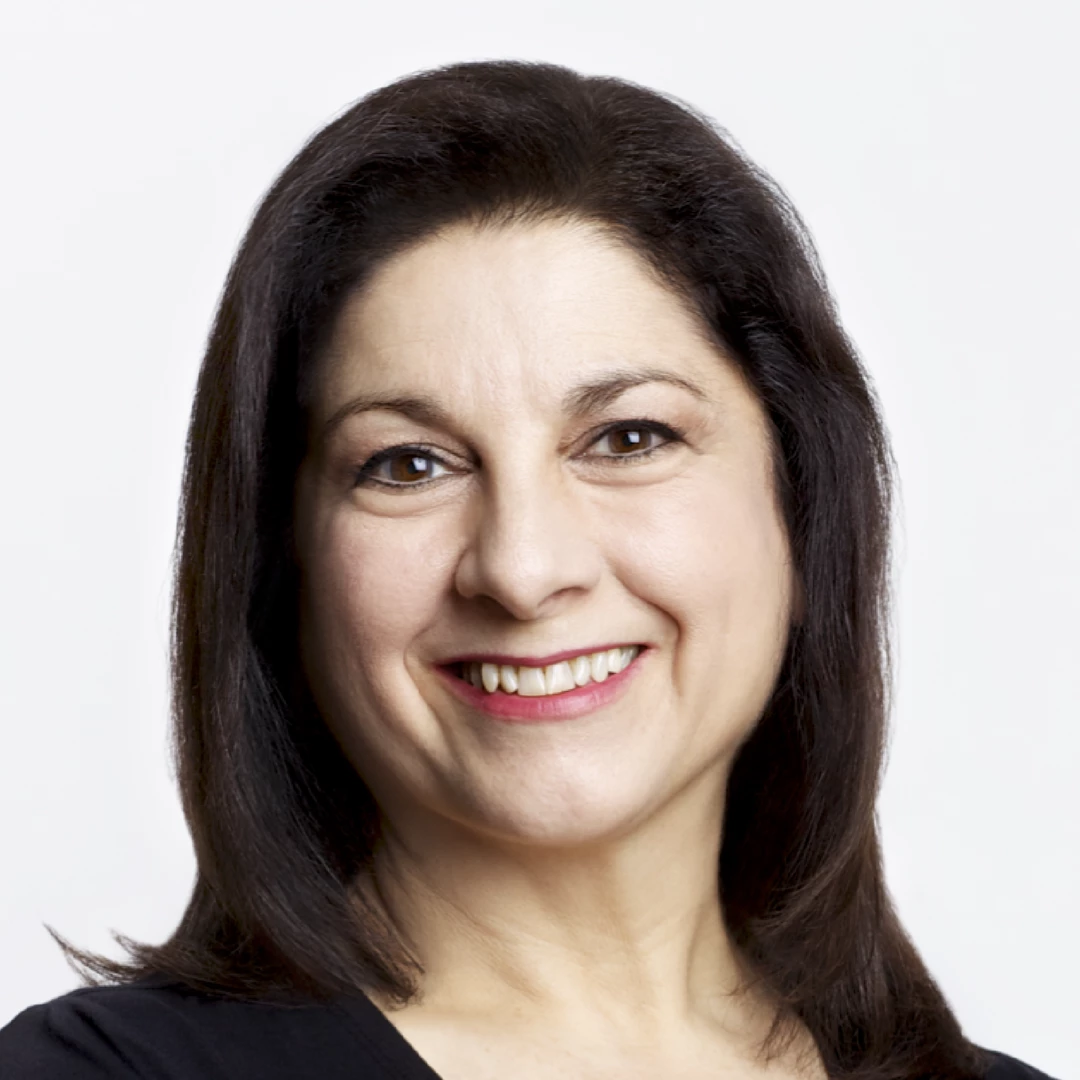Yoga Teaching Methodology: Use Your Words! Working with Mixed Level Groups

Dear Lynn,
“In my yoga classes, I’m generally dealing with people who come in at varying levels of ability. Some of them should not be doing some of the poses full out, but I don’t know how to say that diplomatically. And I also want to keep the more advanced students engaged. Can you help?”
As a mentor of yoga teachers, one of the things I really hate to hear from people is that they tried yoga once, but they weren’t good enough at it. They are usually referring to classes that are heavily asana-based, as the majority of public yoga classes are. And the conversation most commonly involves people who would really benefit from yoga practice.
My stock response: “You didn’t fail at yoga. The yoga failed you.”
As teachers, it’s a given that there is a yoga practice for every body. But how we communicate that fact to our students and potential students is where the real art and craft of teaching come in.
No coincidence then, that the single biggest issue that crops up among my mentees is how to create safe, engaging yoga classes that are accessible to everyone who enters the studio. This is especially relevant when challenged with teaching a class where skill levels and abilities are widely spread.
If you’re part of our Yoga for Wellness Teacher training, you know that the big-picture solution to that mixed-level class conundrum is to teach in courses, rather than ongoing classes. That way, you can move your students along as they are ready. On the other hand, on any given day in an ongoing class, you could easily be faced with a student with 10 years of experience standing next to a student coming up on 10 minutes.
But let’s face it, the majority of classes are still of the ongoing variety. We don’t always have control over who is in the room. And for teachers trying to build a sustainable income from their public classes, discouraging students from coming due to lack of experience is not a good option.
The goal for yoga teachers, then, is to create a community of enthusiastic students who are each progressing at their own ideal pace. How to get there? Start by giving thoughtful consideration to how you prime your students, based on some of your word choices in class.
Creating a Welcoming Yoga Class Environment Via Language Cues
There’s an art to creating welcoming language that invites students to proceed at their own pace and encourages safe, sustainable practice. It takes some thought, but a great strategy is to replace some weighted words with choices that inspire and empower your students, rather than intimidate and cause them to compare themselves to others in the class.
Here’s my hit list of words that send the wrong message, along with the words I’d suggest using instead:
4 Yoga Cues to Avoid and What to Say Instead
1. Word to Lose: “Modify”
What to Use: “Variation”
Ever have the experience of offering a “modified” version of a pose only to witness a student who wasn’t ready put themselves at risk by doing the most extreme version rather than taking your very good suggestion? For some people, being offered what they understand to be a lesser version of a pose is a bit like being put at the kids’ table. The food may be the same, but it still leaves kind of an unsatisfying feeling.
Certainly, we want our yoga students to work at their own capacity with safety. But we’re all human. When an ego becomes invested in trying to measure up to the rest of the class, risky choices can ensue. A student who suffers an injury in class may not return. And you may very well never hear the reason why.
Instead of “modifying,” why not offer a few choices up front that might serve different bodies and skill levels? Call them variations. Offer the choices in a random order, rather that easiest-to-hardest. That way, there’s less of a temptation to assign a relative value to any one version. Describe them all as equally beneficial, then let the students play around and decide which is right for them.
After all, who says everyone has to look like everyone else in a pose? When given a few options, none of which is identified as the “right” one, each person is more likely to choose the one or two pose variations that suit them best.
2. Word to Lose: “Stretch”
What to Use: “Lengthen,” “Soften,” “Relax,” “Release,” “Feel into,” “Send Breath Awareness,” “Notice”
There is nothing wrong with stretching when it’s done with integrity. The problem I see, especially in students with low body-awareness and/or limited flexibility, is a tendency to put their bodies at risk, displacing joints, pushing past healthy end ranges, or pulling on cold muscles while trying to match an image in their heads or another, more flexible body in the room (possibly even yours).
Yoga teachers virtually never intend for their students to put themselves in harm’s way or take their bodies past healthy limits. But for some people, rather than creating length and ease, the word stretch implies pulling the head to the knees in forward folds or getting the knees to the armpits in apanasana. Why not use language that conveys what you really want them to experience?
3. Word to Lose: “Tuck”
What to Use: “Engage,” “Feel,” “Notice,” “Lengthen”
Tuck, or any other instruction that could invite a forceful action, is another term that spurs some students to over perform, especially if they equate maximum effort with good movement. Asked to tuck their pelvis in bridge pose, many just push into their feet and crunch up with rounded spines, moving from one unhealthy relationship to gravity to another.
While an experienced yoga practitioner will understand a cue to engage a gentle tuck of the tailbone without pushing the whole pelvis into an exaggerated tilt, many students who are less steeped in practice won’t. Truth be told, a lot of people don’t know where the tailbone actually is. But a cue to lengthen the tail (or sacrum, or base of the spine or low back) toward the heels prior to moving into bridge is something both beginners and advanced practitioners can understand.
4. Word to Lose: “Advanced”
What to Use: “Practice,” “Explore,” “Inquire”
Once you’ve labeled something, you’ve limited it. By calling a class—or a person—either beginning, intermediate, or advanced, you’ve introduced a rating scale that may inadvertently cause someone with a tendency toward striving to take a class that is above their skill level. A better idea is to create class descriptions that list some of the skills you’ll be working with and the basic conditioning level students would ideally possess. As for advanced poses, what’s harder than sitting still in Easy Pose? Or Savasana?
I’ve heard students who have been in yoga classes for six weeks say that they needed a more advanced class. I’ve been a student of yoga for thirty years and consider myself a beginner. There’s a vast space between those two extremes. Try to use language that describes the work, without an invitation to qualify it.
Rethinking Your Thinking – 2 Words to Avoid When Considering How You Address Your Yoga Students
While you’re at it, here are a couple of words to eliminate from your own thinking, either while teaching or in the way you approach your students:
5. Word to Lose: “Correction”
If you approach your students with the idea that they are perfect as is, you’ll be better able to hear them saying things about their bad knee, poor posture, or lousy balance, all phrases that can be replaced with more body-positive expressions. You’ll be able to gift them with the possibility of rewriting their negative self-talk. And you’ll disabuse yourself of the notion that your job is to decide what’s correct and what’s wrong about them.
When a student starts to tell me about all the things they can’t do with their “bad leg,” I invariably reply with, “Hmmm. And yet that leg helped you to take your child to school this morning, maintain gainful employment, and walk into this room. It may not be functioning at the capacity you like, but it seems like a perfectly good leg to me!”
6. Word to Lose: “Adjustment”
Is the student a mechanical device? If not, “adjusting” them implies they need you to get in there with a set of tools and fix some malfunction. But as I’ve already stated, we are all already perfectly imperfect as is. Any tools employed in class should be the ones you provide to your students, so they can tap into their own inner wisdom.
I haven’t suggested words to replace “correction” and “adjustment.” In my view, both suffer from the same fatal flaw. Each offers a healthy dose of subliminal judgment that infers a power differential. This differential diminishes a student’s ownership of his/her practice, and puts you in the position of deciding what their bodies should be doing. Why not offer encouragement toward curiosity, experimentation, or inner exploration with questions that begin with phrases such as: Can I make a suggestion? Have you tried…? How would it feel if you…?
Besides offering a more welcoming environment for your students, choosing your words wisely offers added benefits to you. Acknowledging that each student is unique–and providing both encouragement and safe alternatives to help them create their own yoga practices at their own (safe) pace–is a great foundation for building a loyal following!
Interested in learning more about our Yoga Wellness Educator Program? Click here for more information.
You might also enjoy this article on yoga cuing with renowned yoga teacher Donna Farhi.
 Lynn Crimando, MA serves as the teaching mentor for Yogauonline’s Wellness Educator Program. She is a yoga teacher, C-IAYT Yoga Therapist, board-certified Health and Wellness Coach, and a Buteyko Practitioner. She has a private practice in New York City and teaches classes throughout the city on behalf of Health Advocates for Older People. In addition, Lynn is on the faculty of the IAYT-approved Yoga Polarity Therapist Training in Malverne, New York. To learn more about Lynn, visit her website: yogalynn.com
Lynn Crimando, MA serves as the teaching mentor for Yogauonline’s Wellness Educator Program. She is a yoga teacher, C-IAYT Yoga Therapist, board-certified Health and Wellness Coach, and a Buteyko Practitioner. She has a private practice in New York City and teaches classes throughout the city on behalf of Health Advocates for Older People. In addition, Lynn is on the faculty of the IAYT-approved Yoga Polarity Therapist Training in Malverne, New York. To learn more about Lynn, visit her website: yogalynn.com



